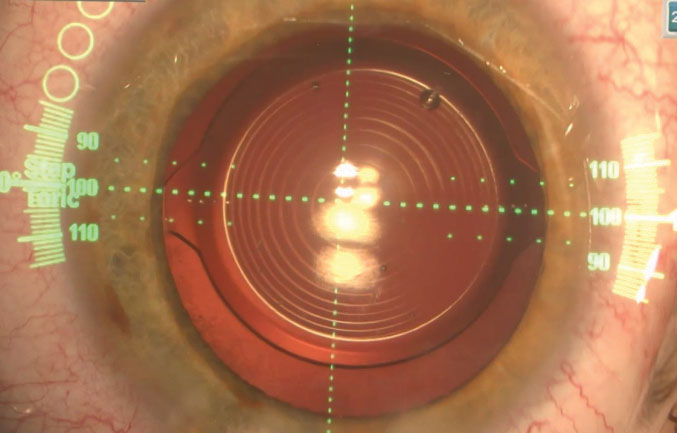 |
Q:
I have been seeing a patient with mild cataracts for routine care, and he has been finicky about every one of his contact lens and spectacle prescriptions. I referred him for a cataract evaluation, and the surgeon implanted a multifocal lens. The patient is very unhappy. What went wrong?
A:
Communication, or the lack thereof, was a big problem in this case, says Paul C. Ajamian, OD, Director of Omni Eye Services of Atlanta, the nation’s oldest comanagement center. “I looked back at the chart, and there was no referral letter that would have given us a heads up about our patient’s personality and predilection for perfection,” Dr. Ajamian notes. All his practice knew was that the patient wanted to go without glasses at distance and near. They informed the patient that he might still need to wear glasses in certain situations, but he didn’t want to hear it. An initial discussion with his optometrist would have had a much greater impact. After the surgeon implanted the Restor (Alcon) lenses, the patient’s vision was 20/25 and J2 OU, but he was still very unhappy.
 |
| Your role in pre-op multifocal IOL counseling could mean the difference between success and failure. |
Communication Breakdown
There is no one who knows the patient better than you. The key is to share that intel with your surgeon! It is unrealistic to expect that the surgeon will get to know your patient and assess their needs in the short period of time they have. Dr. Ajamian advises, “If you want the best outcomes, spend time counseling the patient and then write a referral letter that says more than please do a cataract evaluation.”
Your preoperative cataract exam should always include corneal topography to determine if the patient needs a toric lens. Irregular astigmatism usually precludes a toric IOL but also often rules out a multifocal. Surface disease, pterygia, Salzmann’s nodular degeneration, map-dot-fingerprint dystrophy and LASIK are all deal-breakers for the multifocal.
Identify Type A personalities if at all possible. Be careful not to promise that the patient that they will be able to get rid of their glasses. “I tell everyone that they will be wearing glasses for some situations, even if the results are perfect,” Dr. Ajamian adds. Finally, understand that anyone who pays upwards of $3,000 for a premium lens product is going to expect perfection, and the current technology is not yet there.
Once your exam and pre-op counseling is complete, let the surgeon know what you observed, discussed and recommend. Most will take your advice, knowing that you know the patient best.
Refining the Results
The second question, assuming the patient is a good candidate for a multifocal, is how to tailor the lens to the individual. “The Restor lens (Alcon) allows us to customize the visual correction to the patient’s lifestyle,” says Dr. Ajamian. If the patient spends most of their time on the computer and little time reading, Dr. Ajamian suggests the Restor Activefocus +2.5D lens. “If the patient does a lot of reading in addition to intermediate computer work, a good way to hedge your bet is to start with the +2.5D Activefocus in the dominant eye for better distance and intermediate vision.” When the second eye is done two weeks later, reassess and determine if you need the slightly stronger +3.0D to assist them while reading.
Final Evaluation
Our Type A patient got a failing grade with a multifocal lens because the surgical practice didn’t have the information they needed. The patient can score a better grade if optometrists take the time to counsel each patient and then pass the information they learn along to surgeons. It will make you look much better in your patient’s eyes and leave for you fewer messy surprises behind to clean up post-op.
An A or an F? That depends on the extra effort you are willing to make to “school” the patient on the options available and what will work best for them.

